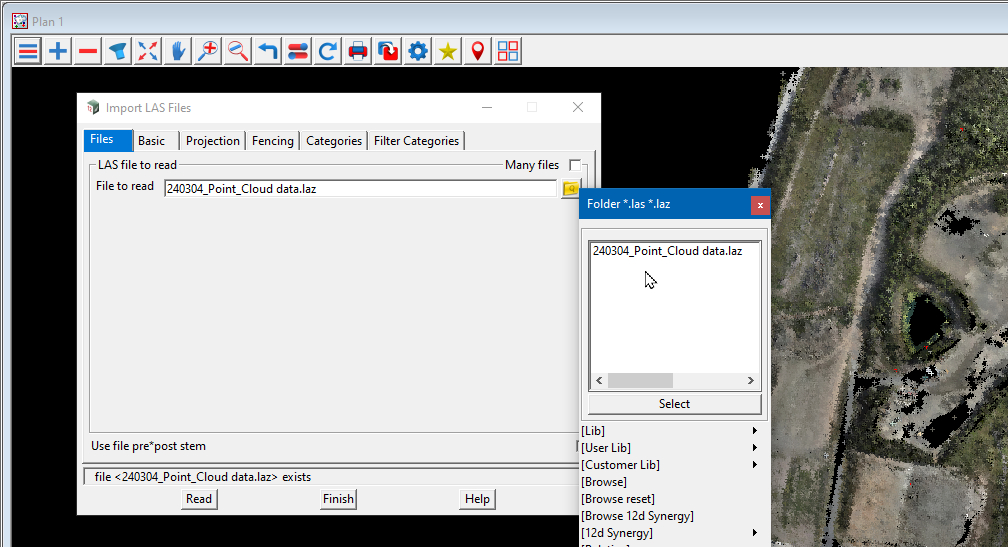LAZ Data files are become more fequently sourced by some 12d Users. Being provided by some Australian authorities such as Geoscience Australia, Digital Elevation Data is being used to describing Australia’s landforms and sea bed. ELVIS (Elevation Information System) is one such source of LAZ file information.
Note: You may require Admin. previledges to progress with the following.
The direct reading of an LAZ file requires an external exe file to be copied onto your PC. 12d Model does not and can not guarantee this external utility and its functionality.
Steps required.
- Ensure you are running the latest version of 12d Model Version 15 (V15.0C1p or above)
- Create a new directory on your PC. “C:\Program Files\12d\12dPublic\15.00“. This directory will not be automatically removed with updates of 12d Model Software and as such needs to be managed by you or your IT administration.
- At the time of writing this post, the link provided here (https://rapidlasso.de/customer-support/) contains the external software (exe) required. Click on the “Download the latest version” and select the “LAStools” (Windows) zip file. This zipped file will contain many files. Unzip this to a known location and find within the “LAStools\bin” directory a file called “laszip64.exe“.
- Copy the “laszip64.exe” file to the directory created above in Step 2.
- Open a 12d Model Project and use the menu item “BIM >Point clouds >Import >LAS >Import LAS“. Selecting a file to import will now provide both *.las and *.laz options for selection. (ensure you set the categories as required for your data).
The Panel is also available via, File =>Data input =>Point clouds =>LAS =>Import LAS
